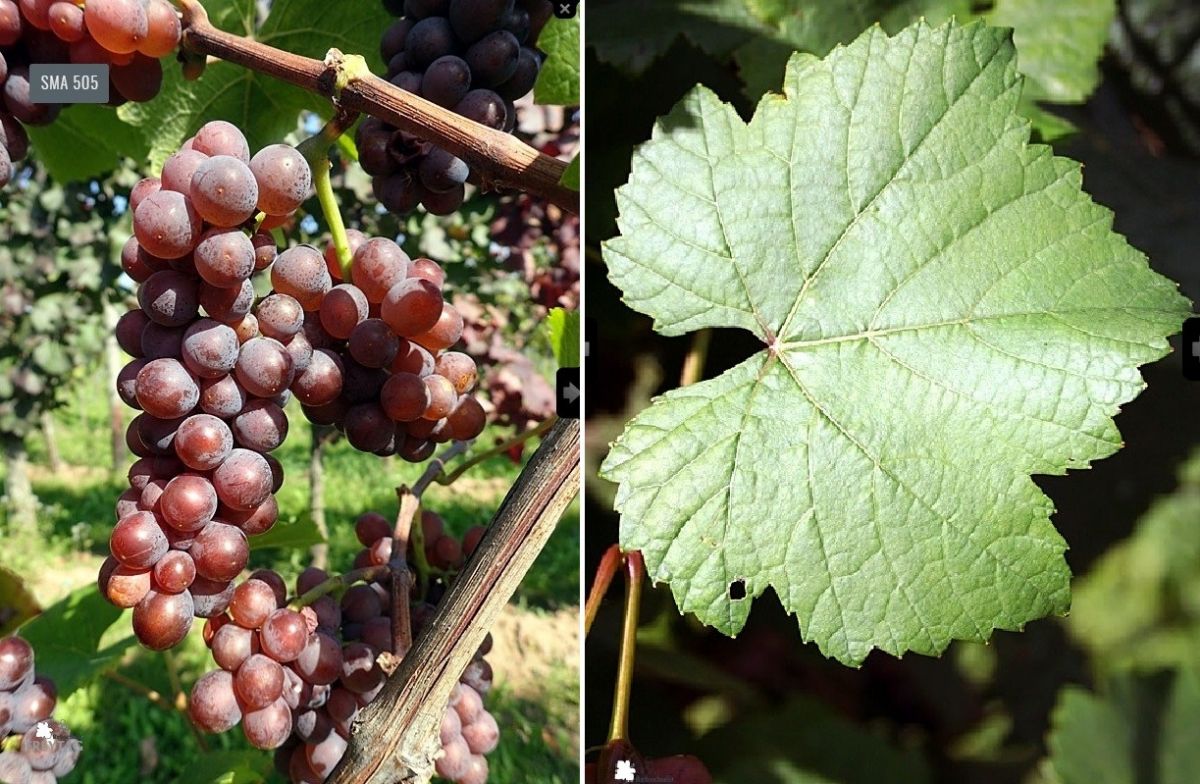The white grape variety originates from France. There are about 150 synonyms that testify to its great age and worldwide distribution in many wine-growing countries. The most important of these, grouped alphabetically by country, are Drusen, Druser, Grauburgunder, Grauer Burgunder, Grauer Clevner, Kleiner Traminer, Rheingrauer, Ruländer, Speyerer (Germany, Austria); Arnaison Gris, Arnoison Gris, Auvernat Gris, Auxerrois Gris, Beurot, Friset, Fromenteau Gris, Griset, Malvoisie, Moréote Gris, Muscade, Noirien Gris, Pineau Cendre, Pineau Cendrée, Pinot Beurot (France); Edelklevner, Tokay until 2007; then forbidden (Alsace); Pinot Grigio, Rulander Grigio (Italy); Râjik (Moldova); Griset, Musler (Switzerland); Burgundské Sivé, Rulandské Sivé(Slovakia); Sivi Pinot (Slovenia); Rulandské Šedé, Burgundské Šedé (Czech Republic); Hamvas Szoeloe, Skürzebarát (Hungary). It is a colour mutation of the Pinot Noir. Pinot Gris then mutated into Pinot Blanc (or vice versa). The Pinot Gris variety thus belongs to the Pinot varieties (see there in detail). In spite of morphological similarities or synonyms that seem to indicate this, it must not be confused with Savagnin Rose (Traminer variety).

The three varieties Pinot Noir, Pinot Blanc and Pinot Gris have passed on their genes through natural crossing (often with the crossing partner Gouais Blanc or Heunisch). However, these three varieties have an almost identical DNA profile, which is why DNA analyses cannot determine which one it was in the case of natural crossings. For this reason, only Pinot is given as the parent in DNA determinations (see there for a list of all direct Pinot descendants). In the case of new varieties, the variety is explicitly known; Pinot Gris was a crossing partner in the varieties Astra, Columna, Deckrot, Freisamer, Gesztus, Hecker, Hölder, Johanniter, Merzling, Nosztori Rizling, Odysseus, Pelso, Ruling, Schantlrebe, Vulcanus.
According to legend, Emperor Charles IV (1316-1378) brought the vine from France to Hungary as early as 1375, where it was cultivated by Cistercian monks at Lake Balaton. That is why the Hungarian name is Szürkebarát (Grey Monk). From Hungary, it then allegedly found its way back to Alsace and was called Tokay here. The origin of the synonym, which has been banned since 2007, is thought to be that Alsatian winegrowers wanted to profit from the famous name. The variety has been known since the 12th century. However, the first reliable mention dates back to 1711 in Speyer in Rhineland-Palatinate (Germany). In that year, it was rescued from abandoned vineyards here by the merchant Johann Ruland (1683-1745) and spread. That is why it received the common name Ruländer in Germany. In France it was mentioned in 1712 as Auvernat Gris, in 1770 as Pinot Beurot and only in 1783 in Flavigny on the Côte d'Or as Pinot Gris.

The early sprouting and also early ripening vine is susceptible to downy mildew and botrytis. The berry colour ranges from greyish-bluish to reddish-brown, and it is not uncommon for all shades to occur on a single bunch (see Chimera and Mutation for more on this phenomenon). It produces fragrant, extract-rich, but rather low-acid white wines with aromas of apples, almonds and honey. With appropriate ageing, these wines also have storage potential and are often made sweet due to the high sugar content of the berries, especially in the French Alsace.
In France, the area under cultivation totals 2,867 hectares, 90% of which are in Alsace alone, where it is one of the approved varieties for the 51 Grands Crus. The rest is mainly in Burgundy and the Loire. In Germany, it occupies 6,713 hectares, mainly in the growing regions of Baden, Rheinhessen and Pfalz, with a strong upward trend, and in Austria 226 hectares. In Italy, the variety is particularly widespread in the north-eastern regions of Emilia-Romagna, Friuli-Venezia Giulia, Lombardy, South Tyrol and Veneto and occupies 18,831 hectares with a strong upward trend.
Other European countries are England (44 ha), Croatia, Luxembourg (196 ha), Moldavia (1,208 ha), Portugal (5 ha), Romania (1,561 ha), Russia (78 ha), Switzerland (230 ha), Serbia (112 ha), Slovakia, Slovenia (508 ha), Czech Republic (826 ha), Ukraine and Hungary (1,594 ha). Overseas, there are stands in the countries of Argentina (401 ha), Australia (3,652 ha), Brazil (7 ha), Chile (437 ha), China, Japan, Canada (649 ha), New Zealand (2,422 ha), South Africa (369 ha) and Uruguay (9 ha), and in the USA mainly in California and smaller amounts in the states of Michigan, New York, Oregon, Virginia and Washington (7,462 ha). In 2016, a total of 48,570 hectares of vineyards were designated, with a continuing strong upward trend. It is thus ranked 20th in the world grape variety ranking (Kym Anderson statistics).
Source: Wine Grapes / J. Robinson, J. Harding, J. Vouillamoz / Penguin Books Ltd. 2012
Pinot varieties: Ursula Brühl, Doris Schneider, Julius Kühn-Institut (JKI)
Pinot Gris: www.rebschule-freytag.de
Voices of our members

There is a vast number of sources on the web where one can acquire knowledge about wine. But none has the scope, timeliness and accuracy of the information in the encyclopaedia at wein.plus. I use it regularly and rely on it.
Sigi Hiss
freier Autor und Weinberater (Fine, Vinum u.a.), Bad Krozingen